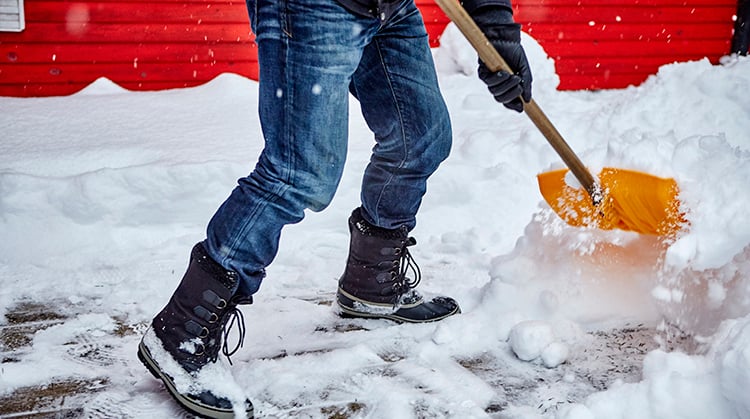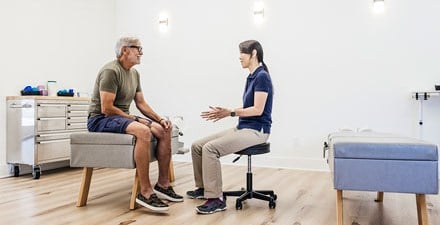
Snow shoveling is a repetitive activity that can cause muscle strain to the lower back and shoulders. Back injuries due to snow shoveling are more likely to happen to people who may not know that they are out of condition.
Following these tips can help you avoid injuries or get help if you experience pain that lasts more than a few days:
- Lift smaller loads of snow, rather than heavy shovelfuls. Be sure to take care to bend your knees and lift with your legs rather than your back.
- Use a shovel with a shaft that lets you keep your back straight while lifting. A short shaft will cause you to bend more to lift the load. Using a shovel that's too long makes the weight at the end heavier. Step in the direction in which you are throwing the snow to prevent the low back from twisting. This will help prevent "next-day back fatigue."
- Avoid excessive twisting because the spine cannot tolerate twisting as well as it can tolerate other movements. Bend your knees and keep your back as straight as possible so that you are lifting with your legs.
- Take frequent breaks when shoveling. Stand up straight and walk around periodically to extend the lower back.
- Backward bending exercises while standing will help reverse the excessive forward bending of shoveling: stand straight and tall, place your hands toward the back of your hips, and bend backward slightly for several seconds.
- If you or anyone you know is experiencing back pain, consult a licensed physical therapist.
Physical therapists are movement experts. They improve quality of life through hands-on care, patient education, and prescribed movement. You can contact a physical therapist directly for an evaluation. To find a physical therapist in your area, visit Find a PT.


